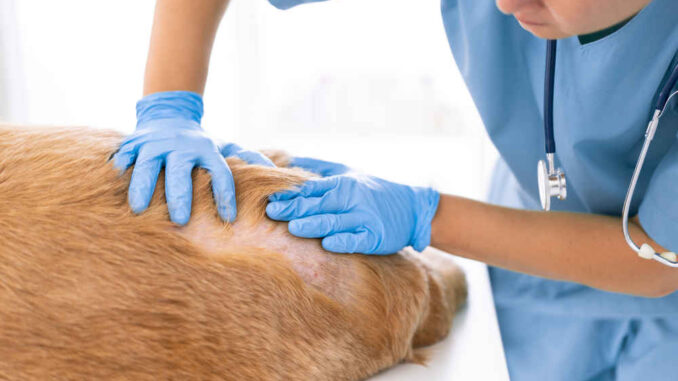
This article was updated on October 16th, 2023

A histiocytoma is a benign (non-cancerous) growth found on the skin of usually young dogs. These growths form when an immune cell (histiocyte) in your dog’s skin over-replicates. The over-replication causes tissue build-up and inflammation (histiocytoma).
Histiocytomas can look pretty scary to the untrained eye, and it can be hard to tell them apart from dangerous growths in dogs. In this article, we will review pictures of histiocytomas and other types of lumps that look like histiocytomas.
7 pictures of histiocytoma on dogs
Many owners think histiocytomas appear suddenly, but they usually take about 1-4 weeks to grow. They appear as a single, dome-shaped growth, and they typically don’t cause pain, itching, or irritation. Let’s look at pictures:
1. On a dog’s ear flap
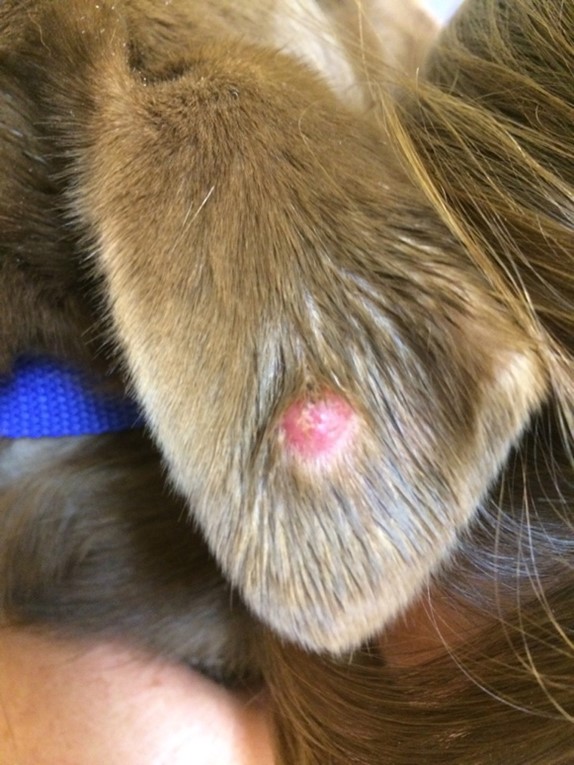
2. Button-like histiocytoma
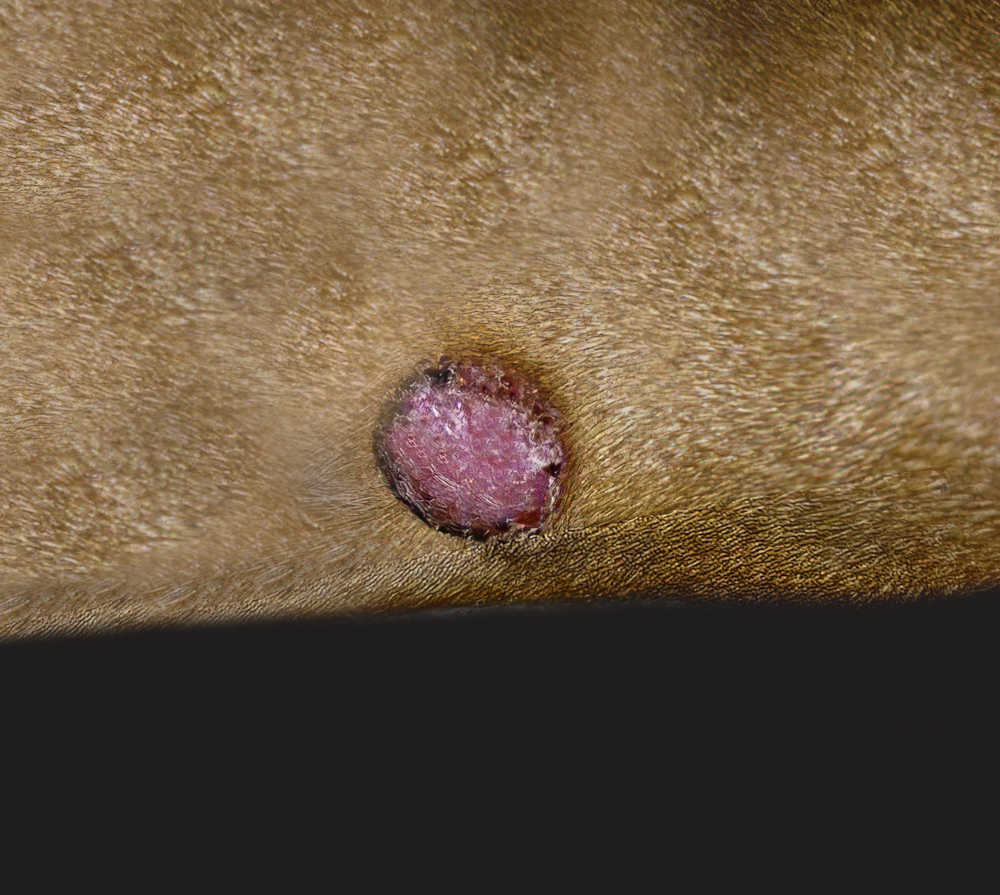
3. Ulcerated histiocytoma on a dog
The picture below shows a red, ulcerated histiocytoma. This can happen due to a variety of reasons, including the dog scratching or licking the area excessively:
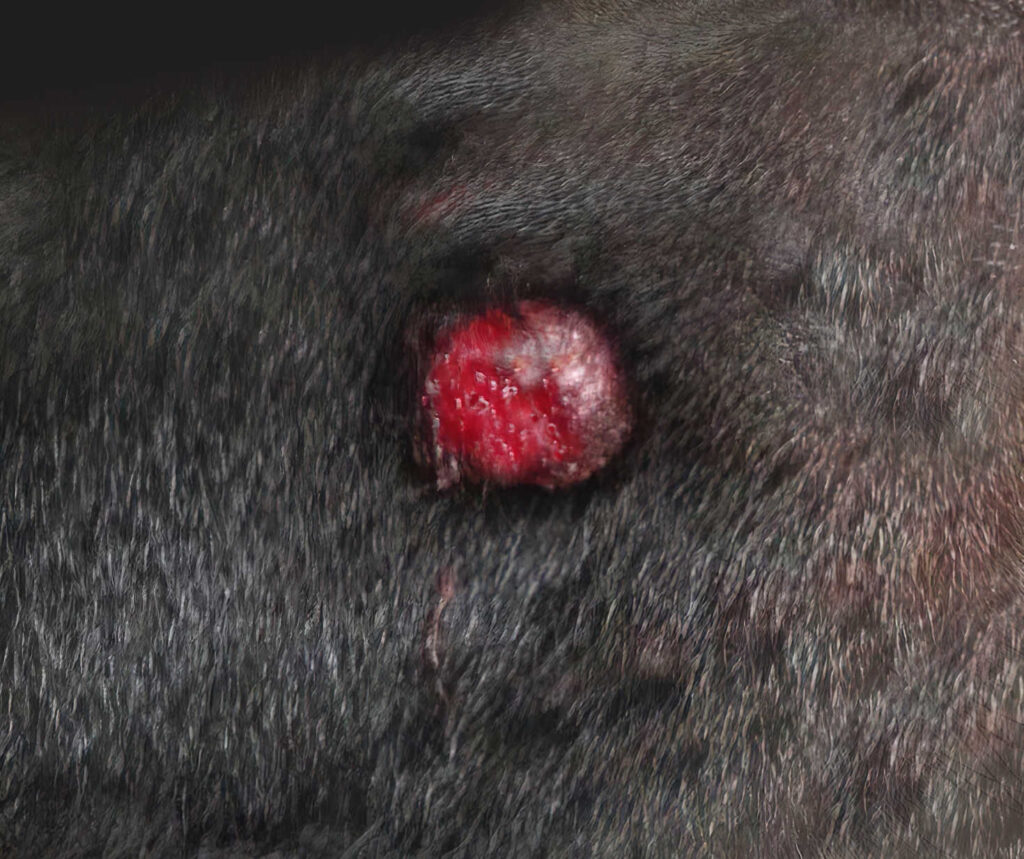
4. On a dog’s paw
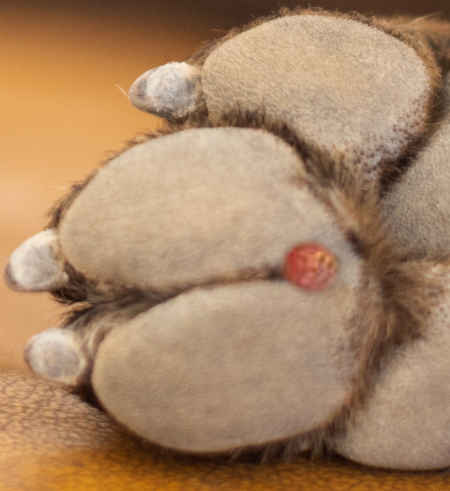
5. On a dog’s eyelid
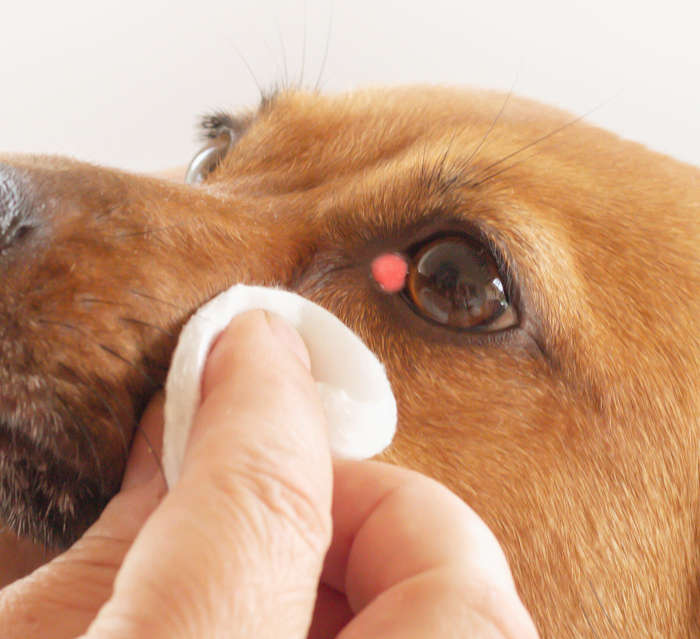
6. On a dog’s leg
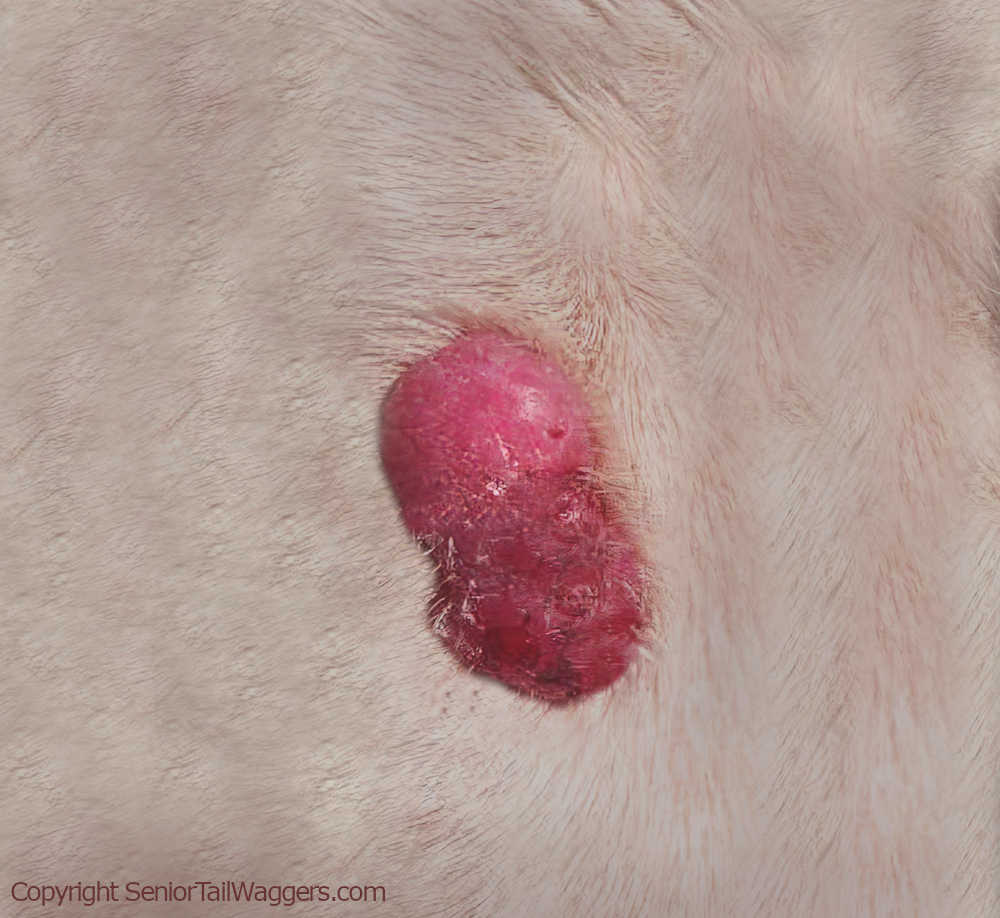
Most histiocytomas heal without treatment
Most histiocytomas will heal in 1-3 months. However, in some cases, they can get worse with time.
You can view a very helpful picture showing four stages of a histiocytoma slowly disappearing (regressing) here on VeterianKey.com. Below is also an example of what it might look like when it starts to heal:
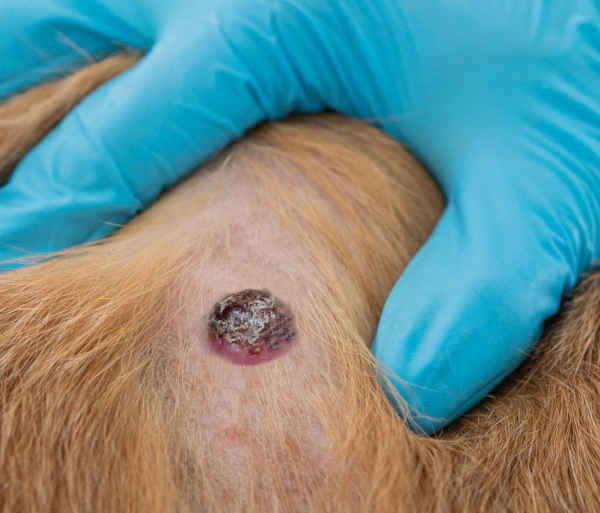
Pictures of tumors or growths that look like histiocytomas
It’s impossible to accurately identify a lump just by looking at it. The most reliable way to determine the nature of a lump is to have it tested at the vet. In this section, we will look at pictures of skin issues that look like histiocytomas:
1. Mast cell tumors
A mast cell tumor is a cancerous tumor that forms when mast cells (immune cells) over-replicate. These tumors are known for their aggressive nature. They come in all shapes and forms but can sometimes look like histiocytomas (read our article: histiocytoma or mast cell tumor?)

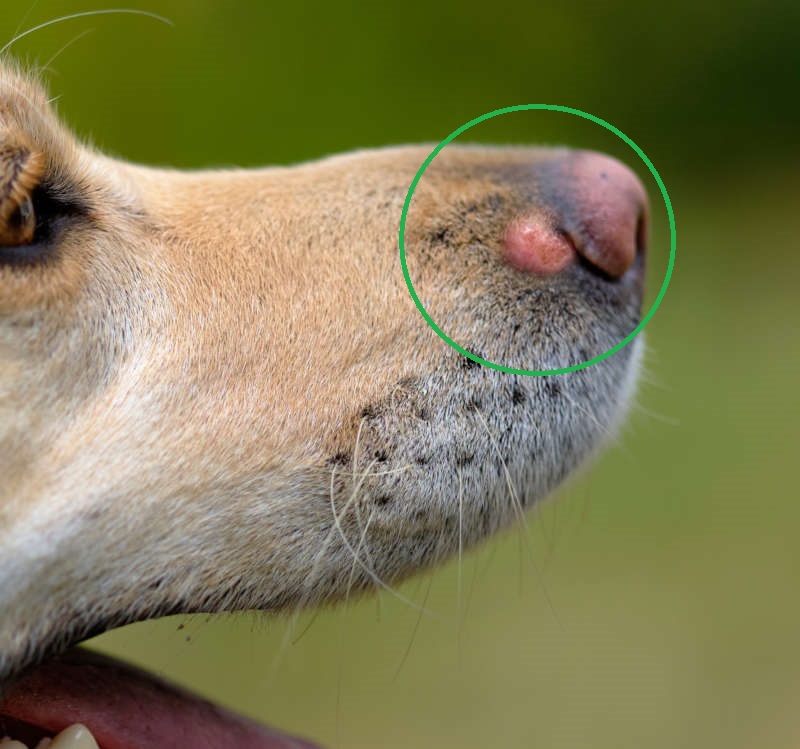
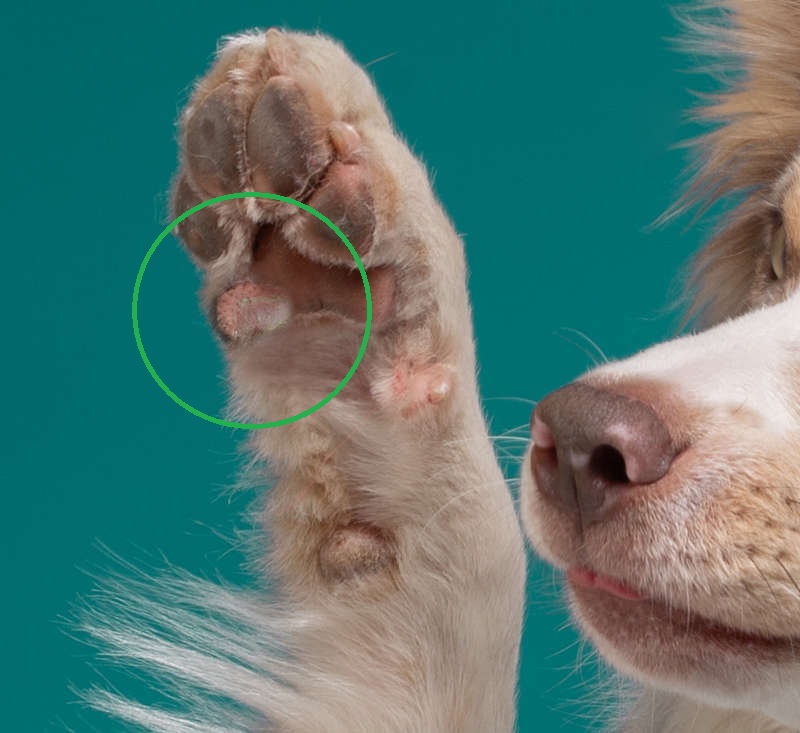
While these tumors commonly appear in older dogs, younger dogs can also get them. Common symptoms of mast cell tumors are:
- A lump that suddenly appears; or grows fast.
- Itching
- Scratching
- An ulcerated lump
- Diarrhea
- Lethargy
- Vomiting
- Poor appetite
- Enlarged lymph nodes
2. Ringworm
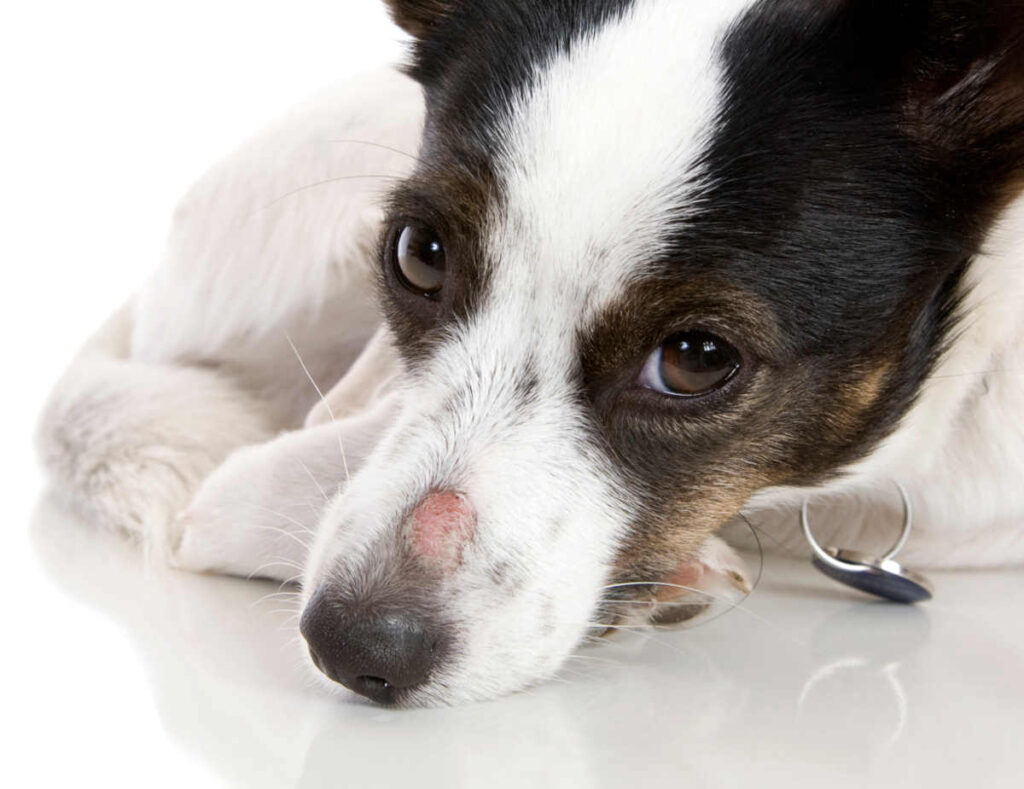
Ringworm is a fungal infection found in dogs, cats, and humans. It is very contagious and spreads quickly. Ringworm rashes are usually flat, but in some dogs, nodules called kerions form on the skin. Kerions are round, raised, red, and hairless and can look very similar to a histiocytoma. View more pictures of ringworm.
3. Other tumors
Various types of tumors can result in red bumps. You can learn more with our article about Red Bumps on Dogs: 8 Likely Causes or view the following pictures of red malignant tumors in dogs:
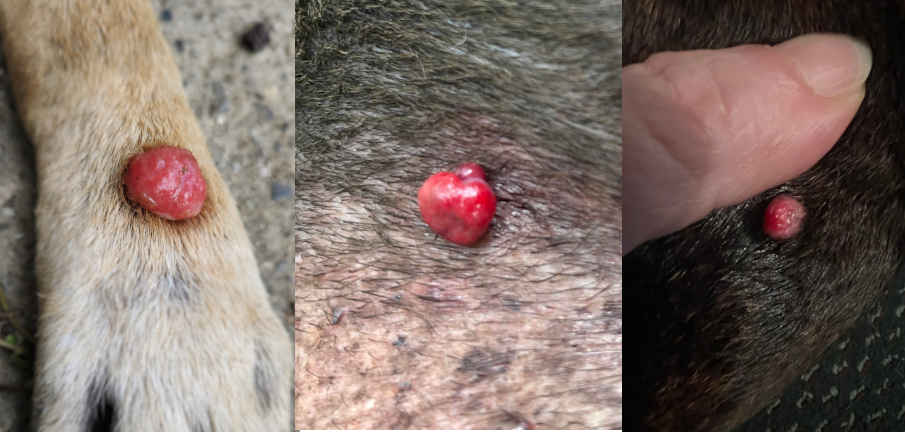
Symptoms
While any new lump should be checked by a veterinarian, there are some tell-tale signs your dog may have a histiocytoma. A histiocytoma typically appears as a single dome-shaped bump that is moveable and does not usually cause any itching or pain. Look for a lump with any of the following symptoms:
- Hair loss
- Redness
- Ulceration
- Scabbing
- Bleeding
- Swollen lymph nodes near the growth.
What types of dogs are more prone to histiocytomas
Histiocytomas occur commonly in dogs under three years old but can affect any dog. Specific breeds that are more prone to getting these new bumps include:
- English bulldogs
- Scottish terriers
- Greyhounds
- Boxers
- Boston terriers
- Dachshunds
Steps you can take at home to help your dog
You should see the vet before you attempt at-home treatment. However, there are a few things you can do at home while waiting to visit the vet:
- Prevent your dog from licking or rubbing the lump by using an E-collar (Elizabethan collar). Most histiocytomas become irritated because your dog is able to reach them. Putting an e-collar on your dog will prevent ulceration, infection, bleeding, and scabbing.
- Keep the lump clean by bathing and flushing it with a mild saline solution. You can make this at home by mixing iodized salt with distilled water. Mix 1 cup of distilled water with ¼ tsp of salt. Warm the mixture in a saucepan to medium heat (not so hot that you can’t stick your finger in it.) Then, let it cool, and use a clean cotton towel or gauze sponge to wipe the histiocytoma clean.
When to see your vet
When your dog has a new lump, it is always a good idea to call your vet. In the best-case scenario, your vet will prescribe a three-month wait to see if the tumor regresses (goes away with time). In the worst-case scenario, your dog will need surgery to remove it. While histiocytomas are typically harmless, your dog could have a more dangerous type of tumor. And the only way you can get an accurate diagnosis is by visiting your vet and getting a biopsy done.
In rare cases, histiocytomas can be severe (see the example picture here on UC Davis website). For example, in a condition called reactive histiocytosis, affected dogs will have multiple histiocytomas. While this is very rare, occurring in less than 1% of dogs, it is a fatal condition.
These histiocytomas can spread throughout the body, causing multiple ulcerated lesions. Dogs with severe histiocytic disease are euthanized if the lesions become unmanageable. Learn more about histiocytic diseases on the UC Davis website.
If your dog is also showing any of the following symptoms, you should call the vet and book an appointment immediately:
- Bleeding
- Itching
- Pain
- Multiple growths that won’t heal.
- Weight Loss
- Vomiting
- Diarrhea
- Loss of appetite
- Lethargy
Disclaimer: This website's content is not a substitute for veterinary care. Always consult with your veterinarian for healthcare decisions. Read More.

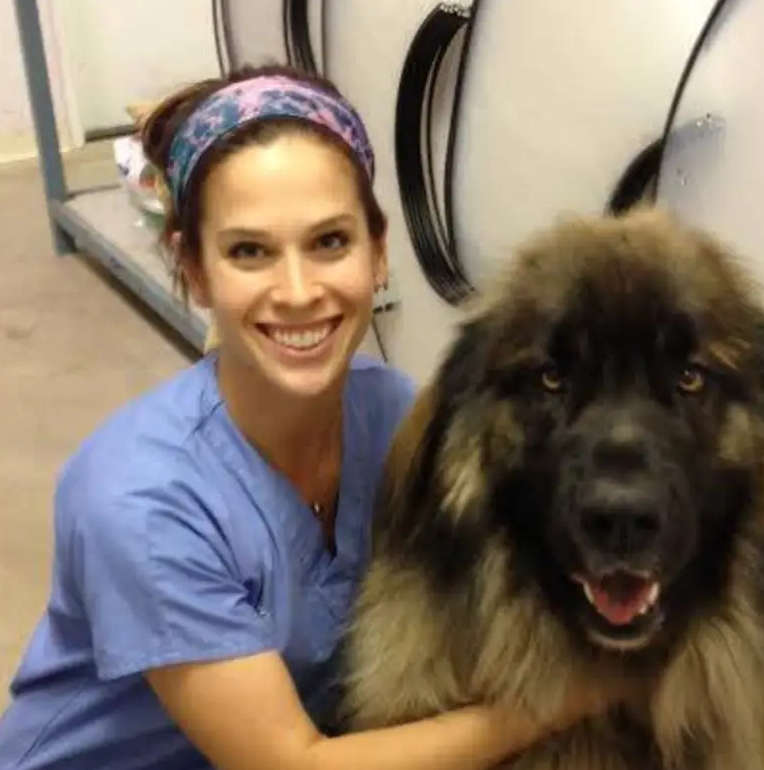
Paid $7 for a home remedy booklet to cure histiocytoma naturaly from home. It’s been 14 days . No booklet. Did I get swindled from Whitney Living FL?
Help!
Hi Laura,
Sorry to hear about your troubles. We don’t know “Whitney Living”, but found this email that may work for you: [email protected]
I highly recommend finding a group online or Facebook where you can get support and help in how to treat a dog with this type of health issue. There are many options for treatment to help pets live longer healthier lives.